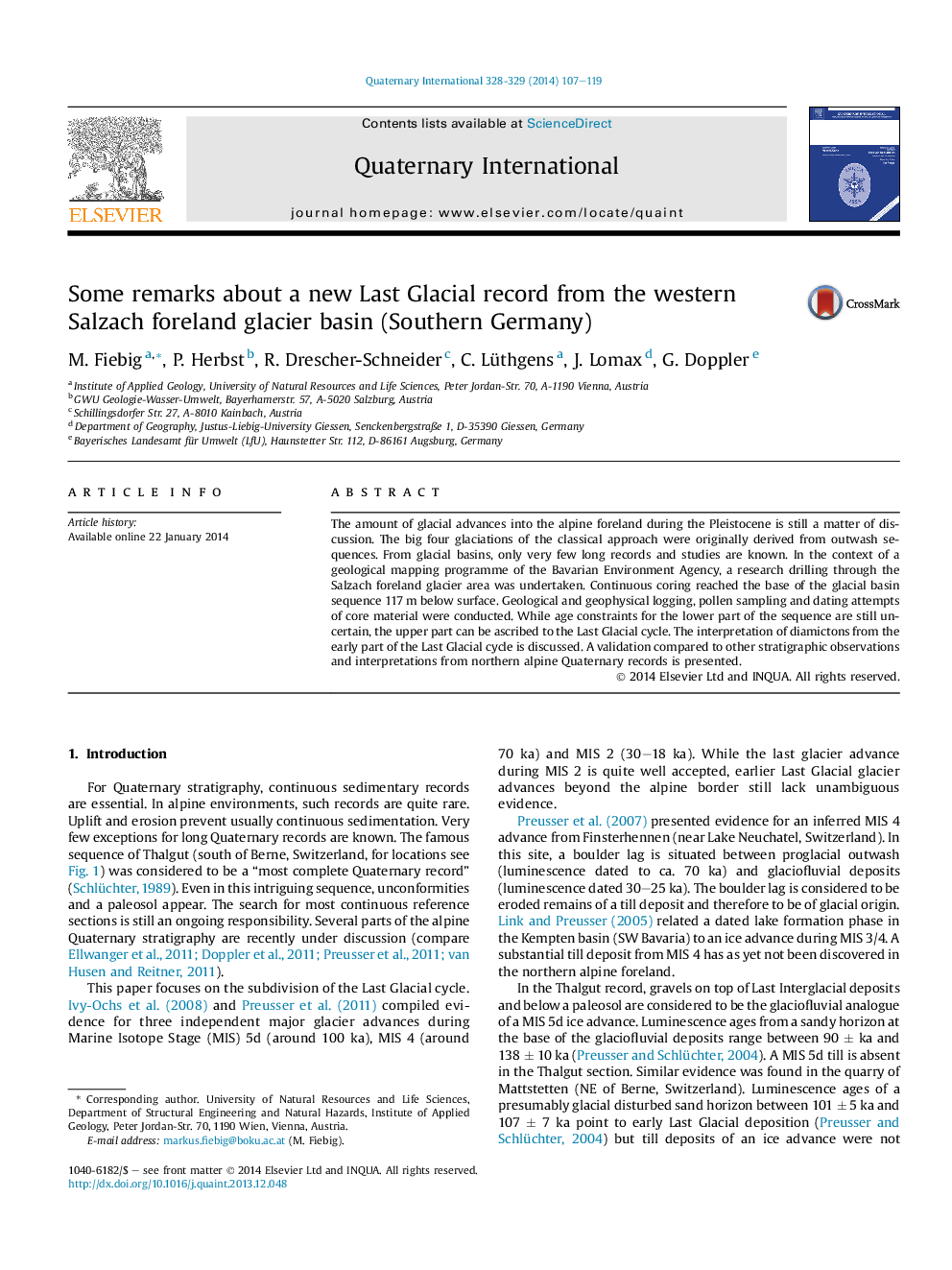| Article ID | Journal | Published Year | Pages | File Type |
|---|---|---|---|---|
| 7452416 | Quaternary International | 2014 | 13 Pages |
Abstract
The amount of glacial advances into the alpine foreland during the Pleistocene is still a matter of discussion. The big four glaciations of the classical approach were originally derived from outwash sequences. From glacial basins, only very few long records and studies are known. In the context of a geological mapping programme of the Bavarian Environment Agency, a research drilling through the Salzach foreland glacier area was undertaken. Continuous coring reached the base of the glacial basin sequence 117Â m below surface. Geological and geophysical logging, pollen sampling and dating attempts of core material were conducted. While age constraints for the lower part of the sequence are still uncertain, the upper part can be ascribed to the Last Glacial cycle. The interpretation of diamictons from the early part of the Last Glacial cycle is discussed. A validation compared to other stratigraphic observations and interpretations from northern alpine Quaternary records is presented.
Related Topics
Physical Sciences and Engineering
Earth and Planetary Sciences
Geology
Authors
M. Fiebig, P. Herbst, R. Drescher-Schneider, C. Lüthgens, J. Lomax, G. Doppler,
